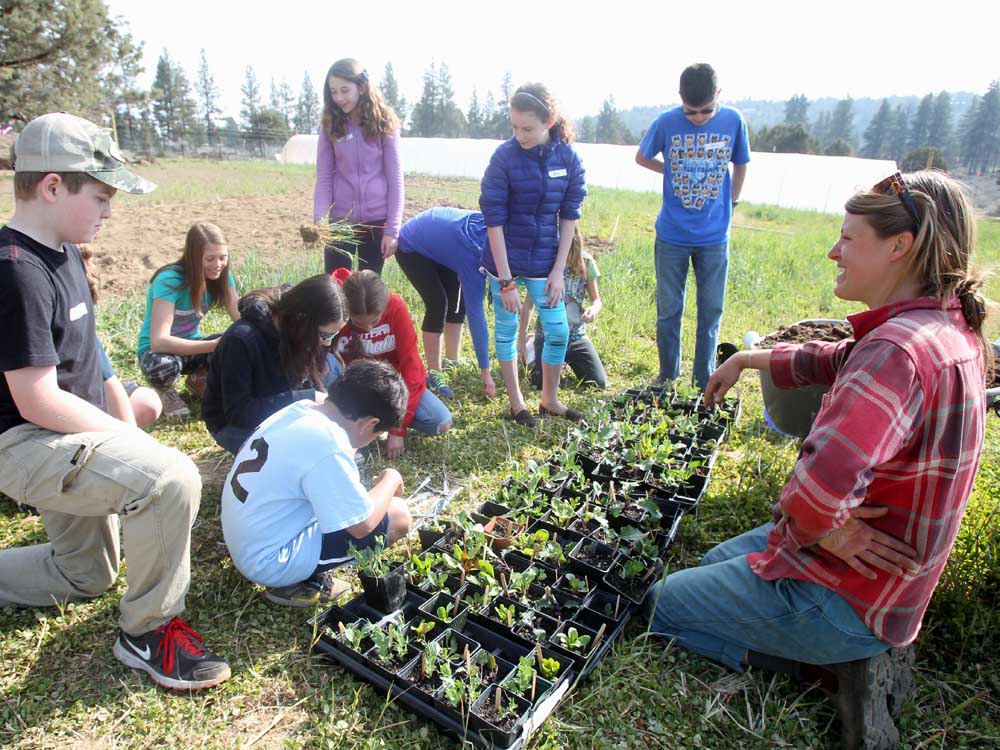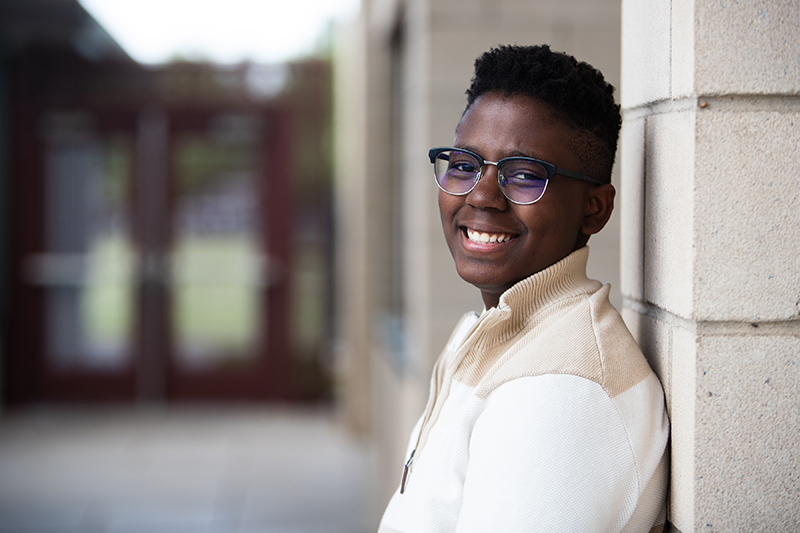Seed to Table program lets Sisters students grow, eat local
Published 12:00 am Saturday, May 2, 2015

- Andy Tullis / The BulletinLauren Griswold, right, who works with the Seed to Table program, talks to Sisters Middle School sixth-graders about pulling up wild grass while discussing gardening during a Seed to Table field trip for the students to their local garden in Sisters Friday morning.
During the Sisters Middle School spring field trip for the Seed to Table program Friday, sixth-graders taste-tested a variety of fresh, local produce. The farm program exposes Sisters students to nutrition science by growing and eating local.
“This is the other thing I don’t like,” Arden Crosier, 12, said, referring to the Brussels sprout in her hand. The asparagus she tried before wasn’t to her liking either.
Arden was blindfolded as she taste-tested the vegetables. Her hands got ahead of her tastebuds though — she assumed she didn’t like the Brussels sprout before she ate it.
Once Arden popped the vegetable into her mouth she was surprised by the flavor. “Ah, it’s not that bad,” she said.
Her partner, classmate Mary Root, 12, giggled and wrote Arden’s reaction on their taste-testing log. The exercise took place at the plot of land Sisters School District uses for Seed to Table, about a half-mile northeast of Sisters Elementary School.
“The focus is healthy eating and learning science,” said Carol Packard, Sisters Middle School science teacher.
The program began in 2013 under the direction of Audrey Tehan, a Sisters native who returned after working on farms across the country and abroad and graduating from Southern Oregon University. Tehan coordinates classes, curriculum and manages the $17,000 grant the Oregon Community Foundation awarded the Sisters Schools Foundation for the Seed to Table project in November 2014. The program, sponsored by the Sisters Oregon Science Club, is also funded by a Farm to School grant. About half of the produce grown goes to Sisters schools and the other half goes to the Sisters Kiwanis Food Bank for a small price.
Friday, sixth-graders rotated between three stations: composting, growing and taste-testing.
“Shovel down, shovel down, shovel down,” Tehan asked of a too-eager sixth-grader who had picked up the tool from the compost pile. He was ready to dig. “Thank you,” she said as he set it down.
Then, Tehan went into the dirty details of what it takes to create the perfect compost: fungus, bacteria and invertebrates, she said, also known as “F.B.I.”
When Tehan urged the students to reach inside the smelly pile, the kids were reluctant, but once they did they were surprised to feel the heat. “Ow! It’s burn-your-hand kind of hot!” Tehan said. The students agreed, and she went on to explain, at a sixth-grade level, why the fertile compost rises in temperature.
“We’ve created the hottest compost party for our F.B.I.,” said Tehan as she stood on a giant pile of the stuff. “What happens when you get a lot of people having fun in a small place? It gets hot.”
At the other station, students used some of the compost to put potted seedlings into the ground. The seedlings had grown from seeds students planted in their classroom last month.
Lauren Griswold, farm manager for the program, showed the kids how to dig a hole and add compost, basalt and bone meal for plant nutrients. The kids used butter knives to dig in and pack the plants into the soil. Tehan estimated only 30 to 40 percent of kids who visit the garden have grown seeds in dirt before. But by the end of the day, Griswold said, several kids had approached her to see if they could come out to the farm more often to help.
“They’re coming up to me asking, ‘How old do you have to be to work here?’” Griswold said, smiling. Tehan said students had asked her the same thing.
Their teacher, Packard, guesses a lot of the experiences are new for kids; last year she made fresh green salsa from tomatillos and hummus from local chickpeas with her sixth-graders.
“The majority of them had never made hummus before, never made tomatillo sauce,” Packard said. She’s excited the program allows the kids access to local produce; in the High Desert, the sandy soil isn’t ideal for growing, but with the Seed to Table garden growing successfully, kids get to try local fruits and vegetables. And it’s not just sixth-graders — third-, fourth- and fifth-grade classes also get to participate in the program, and Tehan teaches a sustainable agriculture class at Sisters High School. Three days a week, Tehan’s high school students are in the classroom, and two days a week they work in the garden. For them, the class is adapted to look at agriculture on a larger scale, but for students of all ages, there are a few common goals.
“We’re trying to create positive food connections, get them excited about being around nutritious foods,” Tehan said. “The other really important thing is making local foods available to the community.”
— Reporter: 541-383-0325, kfisicaro@bendbulletin.com






